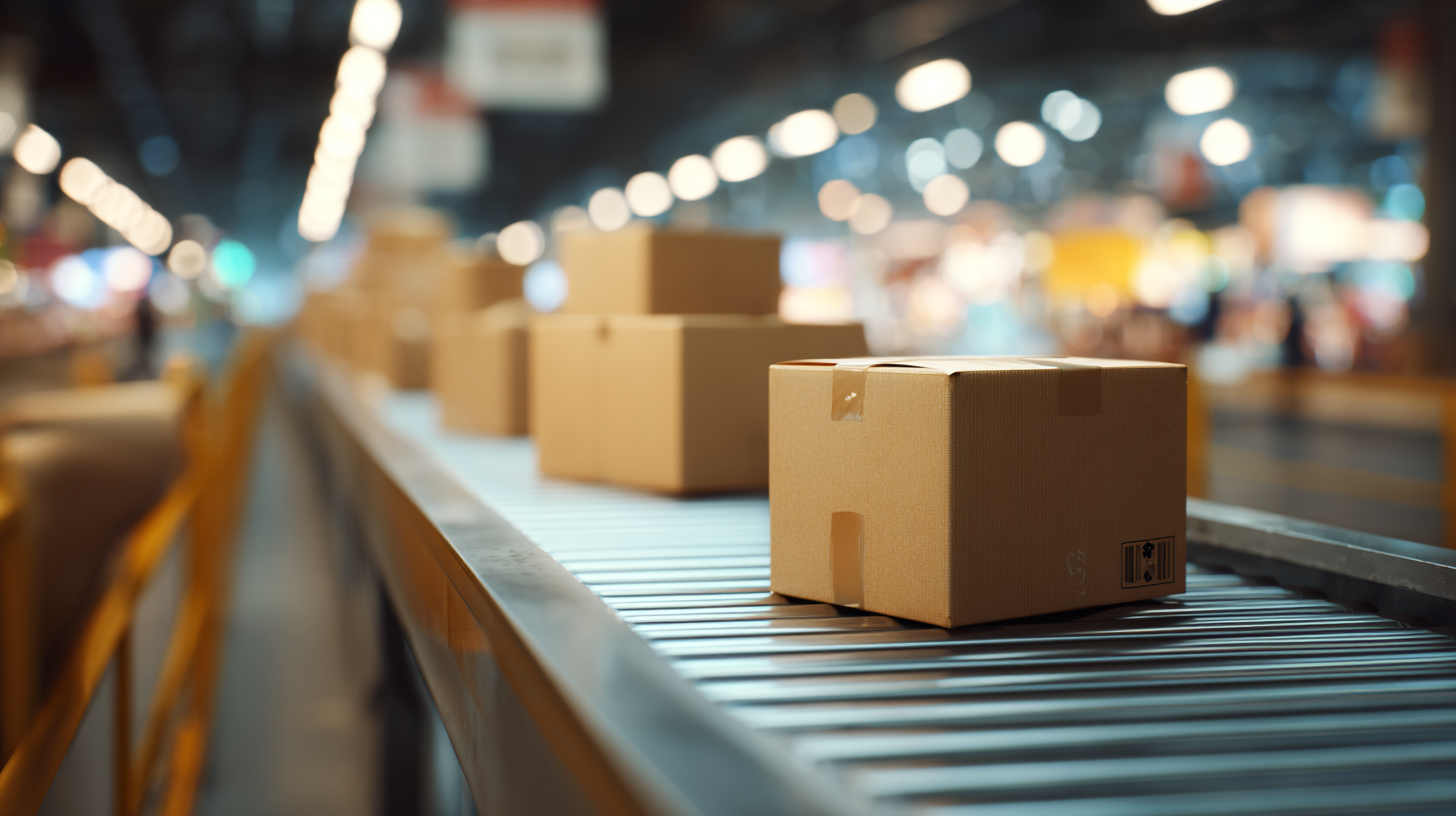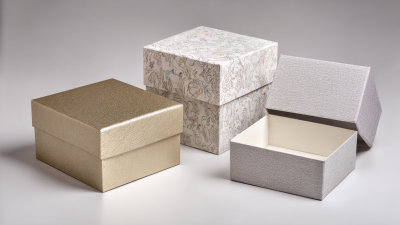Blog
How to Choose the Right Packaging Carton: Tips and Industry Insights for 2023
 In the ever-evolving landscape of logistics and supply chain management, the choice of packaging carton is crucial for businesses seeking efficiency and sustainability. As highlighted in a recent industry report by Smithers Pira, the global market for corrugated packaging alone is expected to reach approximately $350 billion by 2027, underscoring the growing demand for effective packaging solutions. This surge is attributed to the rise of e-commerce, which has necessitated the need for robust and reliable packaging cartons that can withstand the rigors of shipping while ensuring product safety.
In the ever-evolving landscape of logistics and supply chain management, the choice of packaging carton is crucial for businesses seeking efficiency and sustainability. As highlighted in a recent industry report by Smithers Pira, the global market for corrugated packaging alone is expected to reach approximately $350 billion by 2027, underscoring the growing demand for effective packaging solutions. This surge is attributed to the rise of e-commerce, which has necessitated the need for robust and reliable packaging cartons that can withstand the rigors of shipping while ensuring product safety.
Furthermore, a survey conducted by Packaging Strategies indicates that 70% of consumers consider packaging quality as a key factor influencing their purchasing decisions. This statistic emphasizes the importance of selecting the right packaging carton, as not only does it protect products during transit, but it also serves as an essential component of branding and customer experience. As we explore the best practices for selecting packaging cartons in 2023 and beyond, it is essential to consider material options, sustainability, and design innovations that align with industry standards and consumer preferences.
Understanding Different Types of Packaging Cartons for Diverse Products
When selecting the right packaging carton, it's essential to understand the various types available and how they cater to diverse products. According to a recent report by Smithers Pira, the global demand for packaging is projected to grow to $500 billion by 2024, with corrugated boxes accounting for a substantial share of this growth due to their versatility and durability. Offering protection and ease of transport, these cartons are ideal for industries ranging from e-commerce to electronics.
In addition to corrugated boxes, manufacturers can choose from rigid boxes, folding cartons, and padded mailers, each serving distinct purposes. Rigid boxes, known for their strength and premium appearance, are commonly used for luxury items, while folding cartons provide a cost-effective solution for consumer goods. A study by the Paper and Packaging Board found that 72% of consumers prefer products packaged in sustainable materials, highlighting the importance of selecting eco-friendly options. Understanding the unique characteristics of each carton type enables businesses to optimize their packaging strategy, ensuring product safety and brand appeal.
How to Choose the Right Packaging Carton: Tips and Industry Insights for 2023
| Carton Type | Material | Weight Capacity | Best For | Cost Estimate |
|---|---|---|---|---|
| Regular Slotted Container (RSC) | B flute or C flute corrugated cardboard | Up to 40 lbs | General shipping and storage | $0.50 - $2.00 each |
| Die-Cut Boxes | Heavy-duty corrugated cardboard | Variable, based on design | Custom products and retail display | $2.00 - $5.00 each |
| Mailer Boxes | Corrugated cardboard with self-locking | Up to 30 lbs | E-commerce shipping | $1.00 - $3.00 each |
| Folding Cartons | Paperboard | Up to 10 lbs | Retail products, food packaging | $0.30 - $1.00 each |
Evaluating Material Options: Strength, Sustainability, and Cost-Effectiveness
When selecting the right packaging carton, evaluating material options is crucial. Key factors such as strength, sustainability, and cost-effectiveness play a significant role in making an informed decision. According to a report by Smithers Pira, the global demand for sustainable packaging is predicted to reach $400 billion by 2026, underscoring the growing importance of eco-friendly materials. Recycling rates for paper and cardboard have increased, with the Paper and Packaging Board reporting that over 88% of paper products are recycled in the U.S., making these materials not just a sustainable option but also a strong choice for cartons.
**Tips:** When evaluating cartons, consider testing the carton’s burst strength, which is the pressure a box can endure before failing. This is vital if your products are heavy or fragile. Additionally, explore options like corrugated cardboard, which offers a combination of strength and light weight, making it a cost-effective solution.
Cost-effectiveness also hinges on sourcing local materials to reduce shipping costs and carbon footprints. The same report from Smithers Pira indicates that packaging companies that prioritize local procurement can save up to 15% on supply chain expenses. Thus, aligning your material choices with sustainable practices can lead to long-term savings while simultaneously meeting consumer demands for eco-conscious products.

Key Design Elements for Effective Branding on Packaging Cartons
When selecting the right packaging carton, effective branding is paramount. The first key design element to consider is color. Colors evoke emotions and can significantly influence consumer perception. Brands should use colors that not only align with their identity but also stand out on the shelf. For instance, vibrant shades can draw attention, while pastel tones might convey a sense of calmness and sophistication. It is essential to choose a color palette that resonates with the target audience and reflects the product's core values.
Another crucial aspect is typography. The choice of fonts and typefaces can communicate the brand's personality and enhance readability. Bold, modern fonts may be suitable for a youthful brand, while elegant scripts can influence a luxurious feel. Furthermore, ensuring that the text is legible from a distance helps catch the eye of potential customers. Incorporating branding elements such as logos and unique graphic designs will create a memorable visual cue that reinforces brand recognition. Ultimately, thoughtful consideration of color and typography fosters a strong connection between the product and the consumer, making packaging an integral part of the overall branding strategy.
Determining the Right Size and Structure for Maximum Protection and Efficiency
When selecting the right packaging carton, size and structure are crucial for ensuring maximum protection and efficiency. According to a 2022 report by Smithers Pira, 30% of product damage occurs during transportation, underscoring the importance of choosing a carton that fits accurately. An overly large carton can lead to movement and potential damage, while an undersized one may not accommodate the product safely. The ideal fit not only protects the contents but also optimizes shipping costs, as carriers often charge based on dimensional weight.
In terms of structure, the strength of the carton plays a vital role in safeguarding products. The Fiber Packaging Association emphasizes that using the appropriate board grade correlates directly with the level of protection needed during transit. For instance, perforated cartons can significantly enhance cushioning for fragile items, while double-wall cartons are recommended for heavier goods. Furthermore, incorporating features like moisture resistance and tamper-evidence can bolster security. A strategic assessment of both the size and structure of packaging can lead to improvements in product safety and cost efficacy in 2023 and beyond.
Packaging Carton Size and Structure Analysis for 2023
This chart illustrates the distribution of different carton sizes used in packaging for the year 2023. The majority of usage is seen in medium and large-sized cartons, which highlights the need for selecting appropriate sizes to maximize protection and efficiency based on product dimensions.
Industry Trends: Innovations in Packaging Technology for 2025 and Beyond
As we look towards 2025 and beyond, the packaging industry is poised for significant advancements driven by innovation and sustainability. One of the most notable trends is the integration of smart packaging technologies. This includes the use of sensors and QR codes that provide real-time data about the product's condition, enhancing both the consumer experience and supply chain efficiency. Brands are increasingly adopting these features to foster transparency and build trust with consumers who demand more information about the products they purchase.
Moreover, the emphasis on sustainable materials is reshaping packaging design. Companies are exploring biodegradable, compostable, and recyclable options to reduce their environmental footprint. Innovations in eco-friendly materials, such as algae-based packaging and mushroom mycelium, are gaining traction as viable alternatives to traditional plastics. This shift not only caters to the growing consumer preference for environmentally responsible choices but also aligns with regulatory pressures for reduced waste and carbon emissions. As the industry evolves, the commitment to sustainability and technological integration will be key factors influencing packaging strategies in the years to come.






